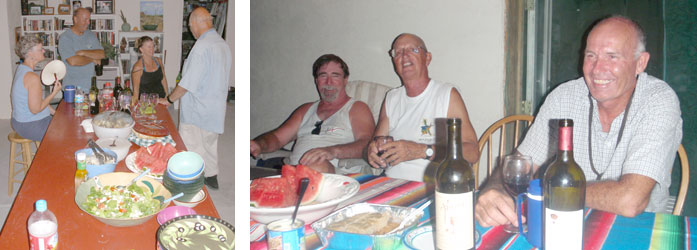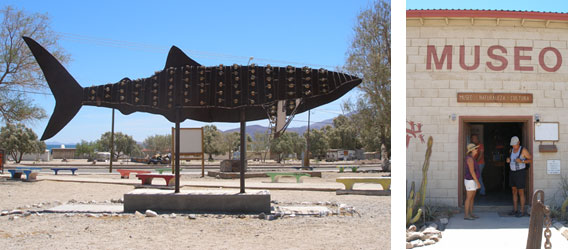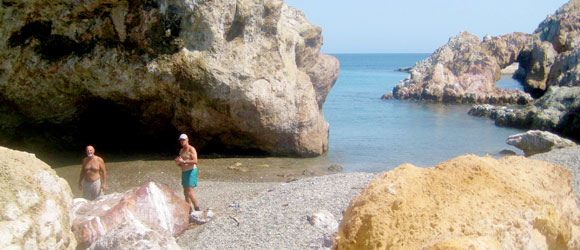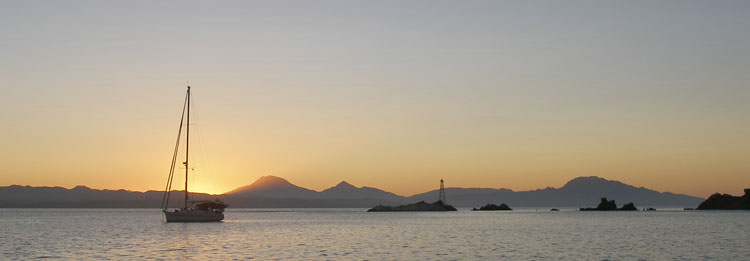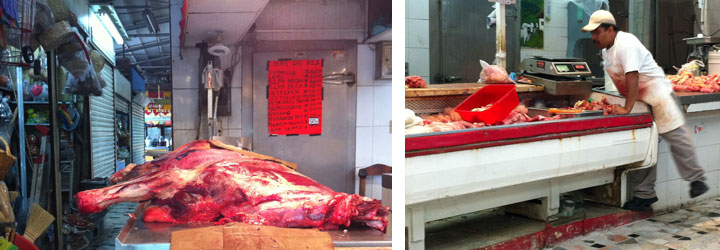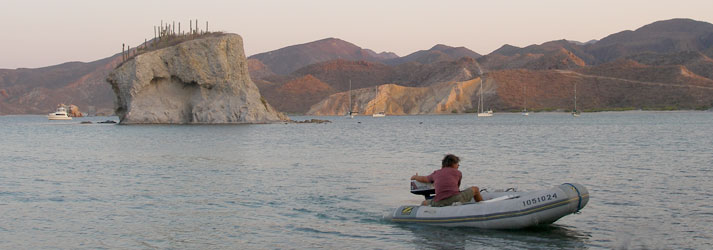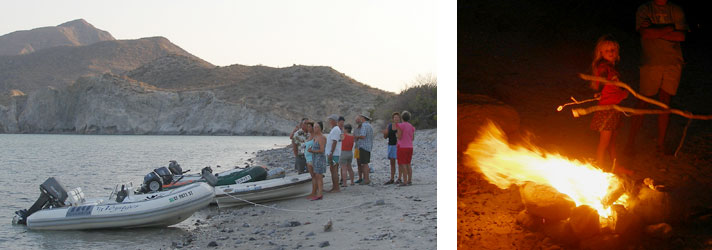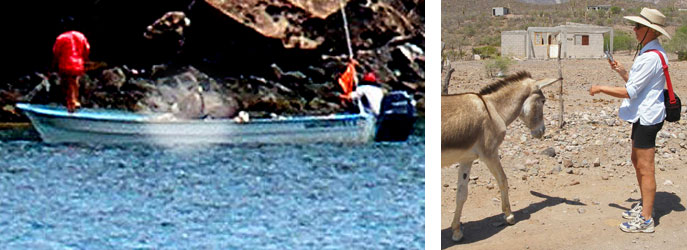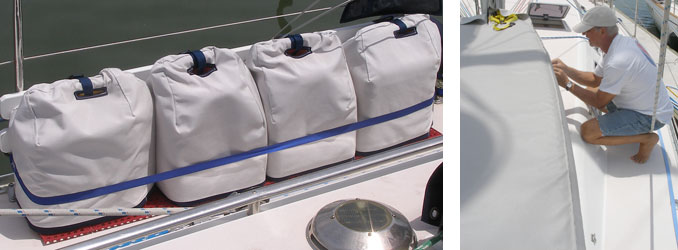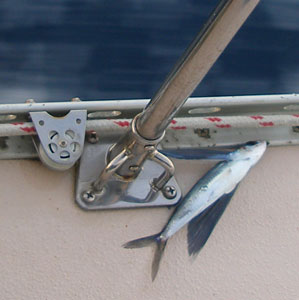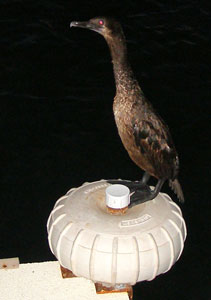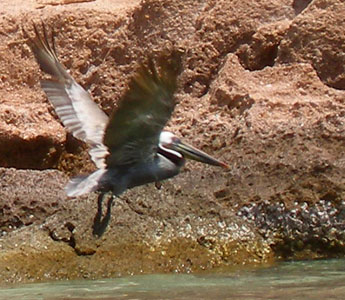
For our first week in Bahia de Los Angeles, Voyager and Firefly had the place to ourselves. In the second week a couple we have come to know down here (from WA, I think this is their 3rd year in Mex.), who have a lovely 45-ft. trawler, joined us to hang out.

Our first anchorage when we arrived to B.L.A. was La Mona in the southeast corner of the bay, a beachside community of Americans with about 50 homes that are occupied either full-time (about three) or part-time. Many of the dwellings have full or partial carports or shed roofs where an owner parks a camper/trailer or motor home, and then perhaps there’s an additional permanent structure of some sort attached. About 25% of the dwellings are conventional houses.
It’s really roughing it up there…generators, propane cooking/heat, solar panels, water trucked in. Definitely it’s open air living ashore for most of the year. Most folks only reside there during the more temperate months in spring and fall. Lows can get down to 30s in winter so the place empties out again then. On most days we were there the highs we in the low 100s, lows in low to mid 80s. The “locals” we met said that this is the coolest summer that they can recall. I’d hate to be there in the hot season! One resident hosted a nice seafood-feast potluck dinner for about 15 (four sailing couples plus some locals) at her lovely house one evening.

This bay is near to an offshore extension of the San Andreas (earthquake) Fault, which combined with strong currents in the area offers a year-round bounty of nutrients. There’s lots of wildlife in this area including whale sharks, harmless plankton eaters who can grow to 50-60 ft. The ones we saw (while swimming at the surface) were in the 20-25 ft. range. We were told the population in this bay is pretty healthy with perhaps 18 of them around. There is a bit of eco-tourism in this area, several days a week one or two small charter boats come out to look for them.
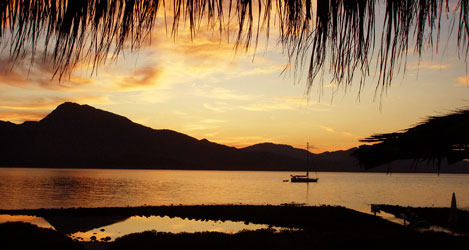
Some early mornings, while sleeping on deck, we would hear whales breathing nearby. The species (fin whales perhaps but there are several species in the area) would barely break the surface as they emerged, so we would hear more than we saw. Most whales are hard for us to identify unless we are close and lucky enough to see one jump most of the way out of the water (rarely).

